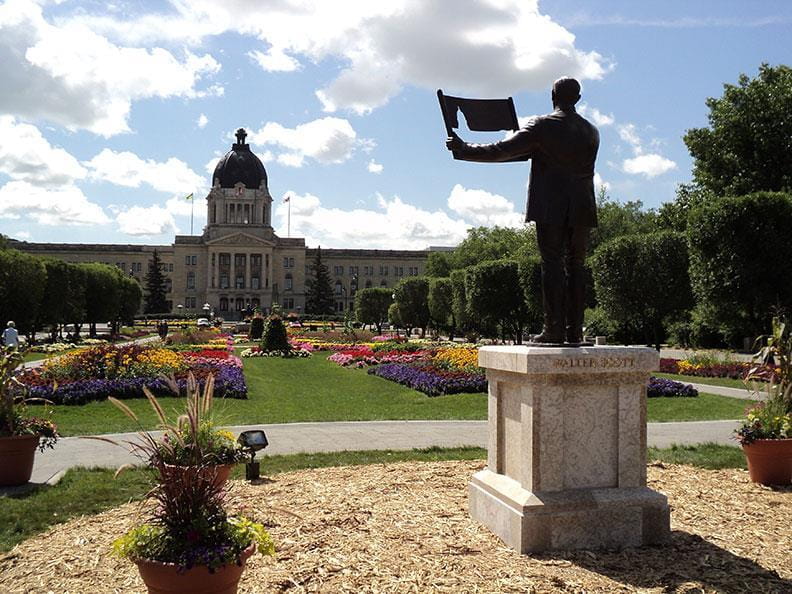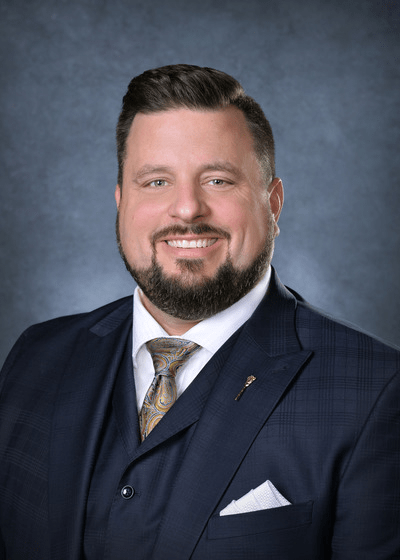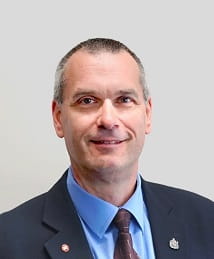Provincial Capital Commission
Inspiring pride and fostering connections to Saskatchewan's Capital City

The Commission is dedicated to providing enhanced visitor experiences and educational programming in Wascana Centre and at Government House to inspire pride in Saskatchewan's capital city while focusing on stewardship. The Commission is also responsible for the promotion of the Legislative Building and the Conexus Arts Centre.
1. About the Provincial Capital Commission
Hope and Dream
We desire a world where plants, animals and people thrive in co-existence, and where natural and built environments are in harmony and bring beauty and fulfilment to the lives of all.
Mission
The Provincial Capital Commission (PCC) enhances pride and quality of life for the general public, tenants and landowners, users and future generations. PCC is a public asset governed by a board of directors comprised of representatives of the Government of Saskatchewan, the City of Regina and the University of Regina. The PCC is responsible for the preservation and stewardship of the land, heritage and culture; enhancement and maintenance of assets and service delivery; facilitation of visitor experiences; and regulation of use.
Vision
PCC is a beautiful, protected and cherished place and space to experience nature, history, learnings and events. Designed for its prairie eco-system, it is relevant for the now and sustainable for the future. We are proud of and celebrate the PCC as an important part of our provincial identity.
Values
- Sustainability
We are answerable for the environmental and financial sustainability of the PCC. Our decisions are made in the interest of future generations. We are proud of what PCC has become and is becoming. - Inventiveness
We embrace change. Like our environment, PCC is ever-evolving and we will guide that change with innovation and ingenuity. - Responsibility
We acknowledge the greatest accountability afforded to us in stewarding the beautiful land and culture of the PCC. We honour this through transparency, honesty and integrity. - Community
We serve and respect the needs of all. With attention to accessibility and inclusion, we embrace and thrive through openness and diversity in our citizen-centered approach. - Joy
Our natural and built environments offer beauty and enjoyment. We are passionate about facilitating a diversity of experiences to our users and the public.
2. Purpose of a Capital
A Capital:
- is a city that is the official seat of government;
- reflects the history, aspirations and democratic traditions of its citizens;
- is a place to remember and explore our collective past, showcasing significant milestones, objects and symbols through museums, historic sites, heritage buildings and stories;
- is a place to celebrate the present;
- is a location of festivals, ceremonies, democratic processes and visits by important dignitaries;
- is a place to envision and realize the future;
- is a centre for advancing cultural arts, education, technology, recreation and athletics, conservation and preservation and justice; and
- is a symbol of the people to which it belongs, their way of government and way of life.
The Capital as a Seat of Government
A Capital city is where the three components, known as the "seat of government" are located. The three components are:
Political
The elected representatives who make laws and policy and work in the Legislative Building (or City Hall for municipal government).
Administrative
The public servants who draft policies and laws and administer government services work in government offices.
Judicial
The judges and lawyers in courts who uphold the laws as part of the legal system and work in the courthouse.
Our system of government is a constitutional monarchy and a parliamentary democracy. In Canada, the head of state is The King and his representatives who act on his behalf. Each Capital in Canada has a vice-regal representative.
Canada has one federal Capital – Ottawa, Ontario – 10 provincial capitals and three territorial capitals.
Our Political System
Canada's political system has three main components:
Parliamentary Democracy
Canada's system of government has three branches of Parliament; Governor General, House of Commons and the Senate, that debate laws before they vote on them. The monarch appoints the Governor General as her representative on the advice of the Prime Minister. The Governor General appoints the senators to represent regions on the advice of the Prime Minister. The members of the House of Commons, however, are elected by the people to represent them in their ridings, therefore creating a parliamentary democracy. This system of "responsible government" means the ministers must retain the confidence of a majority of the elected members in the House of Commons (federal) or Legislative Assembly (provincial).
Federal State
There are two concurrent jurisdictions in Canada: the central government in Ottawa and the 10 provincial governments. These jurisdictions are "co-sovereign," in that each has exclusive constitutional responsibilities as well as some shared ones; together they make up the Canadian State. The three territories, while receiving their authority from the Parliament of Canada, have been granted the right to exercise many powers similar to those of provinces. Their form of government continues to evolve.
Constitutional Monarchy
The Canadian Head of State is a hereditary monarch, His Majesty King Charles III, King of Canada, who reigns over Canada's parliamentary democracy and federal state. The King is personally represented by the Governor General for Canada as a whole and by the Lieutenant Governor in each of the 10 provinces; they carry out most of his functions as Head of State. Territories are under federal jurisdiction; they do not have Crown representatives. Territorial governments are instead headed by commissioners who are appointed by the federal government, an authority the commissioner represents in the territory.
Visit Canadian Heritage to learn more about the Canadian Monarchy.
3. Minister and Board of Directors
The Provincial Capital Commission Board Members function as stewards of Government House and Wascana Centre. Its partners (Government of Saskatchewan, City of Regina and University of Regina) have statutory responsibilities and an obligation to manage the affairs and the business of PCC in accordance with The Provincial Capital Commission Act, The Provincial Capital Commission Regulations and the PCC Governance Manual.
Minister
As outlined in the Act, the PCC is responsible to a minister for the performance of its duties and exercise of its powers. Currently, that minister is the Honourable Eric Schmalz , Minister of Government Relations. View his biography.

Board Members
As outlined in the Act, the Board of Directors is comprised of five members. Three members are appointed by the Lieutenant Governor in Council. One of the members is appointed by resolution of the council of the City. One of the members is appointed by the Board of Governors of the University of Regina. The current Board is comprised of:
Government of Saskatchewan

Laurier Donais: PCC Board Chair and Deputy Minister of Government Relations Biography

Mr. Blaine McLeod: MLA for Lumsden-Morse Biography

Mr. Brad Crassweller: MLA for White City-Qu'Appelle Biography
City of Regina

Mr. Dan Rashovich: Ward 1 Councillor, City of Regina Biography
University of Regina

Ms. Dianne Ford: Vice-President (Administration), University of Regina Biography
Board Observers
- City of Regina - Councillor Victoria Flores
- University of Regina - Mr. Neil Paskewitz
Contact Us
Your thoughts and opinions are very important to us. We value your feedback and welcome any comments you have to help improve our programs and services. Thank you for your time and input!
4. Provincial Military Liaison
The PCC is proud to support the work of the Provincial Military Liaison – MLA Blaine McLeod.
We work alongside MLA McLeod and his team on many initiatives intended to support our Saskatchewan military members, veterans and their families.
Some highlights of our annual initiatives:
- Remembrance Day Wreaths
Each year, the PCC partners with the Royal Canadian Legion Saskatchewan Command to fund the creation and distribution of over 170 wreaths to communities across Saskatchewan that have a cenotaph. - Military Family Appreciation Tea
On the third Friday of September lies Military Family Appreciation Day. In honour of this day, the PCC and the Provincial Military Liaison partner with the Moose Jaw Military Family Resource Centre to distribute 50 Victorian Tea packages to families. - Veteran Care Kits
In early December, the PCC partners with the Royal Canadian Legion Saskatchewan Command to distribute 50 holiday gift packages to veterans across the province.
In addition, our office works closely with the Provincial Military Liaison to support local efforts for military awareness and our province’s military history.
5. Land Use Regulations
Wascana Centre is home to the Legislative Building, the University of Regina, Saskatchewan Polytechnic, the Conexus Performing Arts Centre, the Saskatchewan Science Centre, Royal Saskatchewan Museum, MacKenzie Art Gallery, the Habitat Conservation Area and many others. These sites combine to create a unique place with urban development and major recreational assets for Regina.
Wascana Centre has had a Master Plan in place since 1913 to guide developments and land use within the park. The plan is updated on a regular basis, following comprehensive public input and review. The Master Plan will continue to guide the development of structures, infrastructure and landscapes throughout Wascana Centre, now and into the future.
Read information about the 2023 Wascana Centre Master Plan Review and Renewal.
The Provincial Capital Commission and its Board of Directors, with guidance from their Architectural Advisory Committee, are responsible for regulating and stewarding this land. The following provides background and information on proposed development within Wascana Centre.
- Land Use and Development Policy
The policy establishes the criteria for the Provincial Capital Commission's approval of improvements and all land use within Wascana Centre and at Government House. - Proponent Development Checklist
This checklist is provided to the proponent and outlines the current audited steps in the Wascana Centre – Master Plan 2016 that are required of all development projects within Wascana Centre. - Definitions: Public Participation Policy and Procedures
These are the definitions used in the public participation policy, public participation for major development procedure, and public participation for Wascana Centre – 2016 Master Plan procedure. - Public Participation Policy
This policy establishes guiding principles and standards for public participation activities within the decision making processes for the Provincial Capital Commission. - Public Participation for Major Developments Procedure
This document describes the process for the development, review and approval of public participation plans for major developments initiated by proponents and the steps that must be taken by the proponent to implement the public participation plan. - Public Participation for Master Plan Procedure
This document describes the process for the development, review and approval of public participation plans for the review and renewal of the Wascana Centre - 2016 Master Plan and for major amendments to the Master Plan, and the steps that must be taken to implement the public participation plan. - Public Participation Policy and Procedures Reference Manual
This document outlines and provides references for: the Spectrum of Public Participation (International Association of Public Participation - IAP2 - www.iap2.org), Public Notice Standards, Example of Public Participation Activities, Master Plan Public Advisory Committee, and Public Participation Stages for Review and Renewal of the Master Plan. - Tenant Land Use Application Policy
This policy outlines the land use criteria that must be approved by the Provincial Capital Commission before finalizing any lease agreement between between the property owner, lessor or sub-lessor, and the tenant.
6. Plans and Annual Reports
The Provincial Capital Commission's Business Plan for 2024-25 outlines the strategies and key actions the PCC has identified for the current fiscal year.
The Provincial Capital Commission's 2023-24 Annual Report presents the organization's results for the fiscal year ending March 31, 2024. It provides results of publicly committed strategies, key actions and performance measures identified in the Provincial Capital Commission's Business Plan for 2023-24.
7. Legislation
The Provincial Capital Commission Act
The Air, Army, Sea and Navy League Cadets Recognition Day Act
The Culture and Recreation Act, 1993
(joint responsibility with the Ministry of Parks, Culture and Sport and Tourism Saskatchewan)
The Heritage Property Act
(joint responsibility with the Ministry of Parks, Culture and Sport and Tourism Saskatchewan)
The Historic Properties Foundations Act
The Government House Foundation Regulations
National Peacekeepers Recognition Day Act
The Recognition of John George Diefenbaker Day Act
8. PCC Newsletters
View past editions of the newsletter by visiting the Publications Centre.
To receive your copy of future PCC Newsletters, please email pccnewsletter@gov.sk.ca with your subscription request including your full name and preferred email address.
9. News Releases
April 17, 2025 - Hop Over to Government House for the Annual Easter Egg Hunt
February 21, 2025 - TeleMiracle Week Recognized Ahead of Annual Telethon
February 14, 2025 - Old Fashioned Family Fun at Government House
November 29, 2024 - Celebrate the Holiday Season at Government House's Old Fashioned Victorian Christmas
September 26, 2024 - Plan a Spooky and Family Friendly Halloween Season at Government House and Wascana Centre
August 26, 2024 - Dutch Elm Disease Identified in Wascana Centre
August 16, 2024 - Step Into Living History at the "Not Who, But Watt!" Event Hosted by Government House
July 22, 2024 - Government House Presents Additions to the Saskatchewan Residential School Memorial
May 17, 2024 - A Royally Good Time: Celebrate May Long Weekend at Government House
